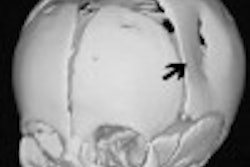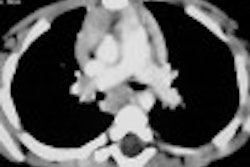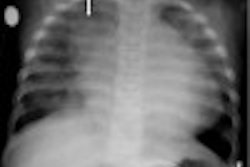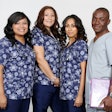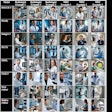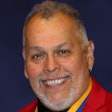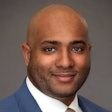MONTREAL - Bolstered by strong organizational skills and an acute demand for their services, radiographers in the U.K. are increasingly performing duties so medically advanced as to seem almost heretical by the workday standards of non-radiologists in the U.S. Even "radiographer," an English term that translates poorly into American usage, has a certain ring to it that "technologist," or even "radiologist assistant," clearly lacks.
Through decades of progress, and for myriad reasons, the best radiographers have incrementally gained responsibilities that have finally put them in partnership with radiologists. Experienced radiographers are interpreting images, reporting their impressions, perhaps even running clinics. To achieve such levels they must endure increasingly difficult educational and training requirements, many of which are still being sorted out by the National Health Service and by the College of Radiographers.
At the same time, important questions and controversies remain as to how far their advancement should proceed, how much the most advanced radiographers might be expected to earn, and who will do their jobs now that they’ve advanced beyond the role of technologist. But there is broad consensus that the trend forward, for better or worse, is simply too entrenched to be thrown into reverse.
A recent study led by Richard Price, who heads the School of Paramedic Sciences, Physiotherapy and Radiography at the University of Hertfordshire in the U.K., confirms that the range of radiographers’ responsibilities continues to grow rapidly right into 2004. And in a presentation at the International Congress of Radiology on Saturday, Price noted that, in any case, the country has a history of non-radiologists doing imaging.
In the early years of the 20th century, x-ray practice was a free-for-all in England, Price said. "Radiography was undertaken by basically anybody who wanted to (do it). I think the main group would be the electrical engineers: They had technology, they had access to the equipment, they knew how to process the plates. Dentists -- there are reports of hospital porters doing radiography -- carpenters, and the case of a gardener."
These pioneers made important contributions, Price said, and many gave their lives in pursuit of the advancement of imaging. As the field grew and prospered, however, a rough division between medical practitioners (later to become radiologists) and lay radiographers (non-medical practitioners) began to take shape, Price said. So when the medical radiologists organized the Society of Radiographers in 1920 with the goal of setting professional standards that they alone could achieve, it wasn’t long before the non-medical practitioners were to be strictly limited in their duties, Price said. A resolution recorded in the minutes of a society meeting in 1924 provided:
"That no member (other than one of the medical profession) give a report or diagnosis on any radiographic examination; contravention to this rule will render the member liable to dismissal from the Society under para. 28 of the Articles of Association," Price said.
The strict boundaries between the professions of radiologist and radiographer held firm for nearly 50 years, until Dr. K. Swinerton, writing in The Lancet in 1971, said it was "time for official recognition that radiographers assist in film interpretation," Price said. A 1986 proposal by Dr. J. Witcombe advocating that radiographers perform obstetric ultrasound opened things up further, and the debate over the appropriate duties of radiographers continues today (The Lancet, 1971, pp. 589-590; British Medical Journal, January 11, 1986, Vol. 292:6513, pp. 113-115).
In the late 1980s, a worsening shortage of radiologists and increasing patient load helped propel the idea of a greater role for radiographers, with a number of journal articles proposing that radiographers’ skills be tapped to speed workflow and reduce errors. These culminated in 1988 with the amendment of the College of Radiographers’ code of conduct, which allowed radiographers to conduct ultrasound exams, Price said.
Soon the topic of role extension was a live wire, according to Price, and a 1995 report on the effectiveness of radiology services at nine hospitals "commented on the softening of the traditional demarcation lines between the work carried out by radiologists and radiographers," he said. "The report considered that radiographers could be trained to interpret certain images because of the difficult experience of some departments in providing a full reporting service."
A 1994 survey (by Paterson et al) of 470 diagnostic imaging departments, of which there was 70% (333) response, showed that radiographers were giving intravenous injections, venograms, barium meals, swallows, barium enemas, and reporting, Price said.
In the late 1990s came reports that radiographers’ roles were continuing to expand, but without documentation to support them. It was then that Price and colleagues decided to map the role changes throughout the U.K in an ongoing series of structured surveys to every hospital in the NHS Trust in 1998, 2000, and most recently in 2004. The surveys, which Price said he will continue to produce periodically, are followed up by extensive interviews with radiology managers.
Documenting expanded roles
Radiology managers were asked to identify their region, their status as a teaching or non-teaching facility, the extended-role tasks and the year each was adopted, number of radiographers engaged in each activity, and implementation of a four-tier structure that spelled out the duties of different levels of radiographers, Price said.
The response rate was 83% in 1998 (230/276), 68% in 2000 (172/253), and 70% in 2004 (177/254). The extended-role tasks included IV injections, barium enemas and meals, reporting, and the "red-dot" system, in which radiographers are tasked with marking patient files they feel contain suspicious findings, a practice that "remains a high-risk activity," Price said. There was also a category for respondents to fill in "other" extended roles their radiographers had begun to perform.
According to the 2004 results, 168/177 respondents (95%) were performing IV injections (including contrast and drugs such as spasmolytic agents). A total of 2,184 radiographers were performing the activity, and the earliest implementation was in 1996 (49 sites), Price said. There was no difference between teaching and non-teaching hospitals.
Of the responding sites, 147/177 (83%) were using radiographers to perform barium enemas, at 79% of teaching hospitals and 86% of non-teaching hospitals. Four hundred seventy-three radiographers were engaged in the activity, beginning in 1985 at the earliest.
And 143/177 (81%) of sites were using the "red-dot" system, including 76% of teaching hospitals and 86% of non-teaching hospitals. The earliest reported implementation of this role was 1966, and 3,336 radiographers were involved in the task, Price said.
Only 11% (19/177) of sites were having radiographers administer barium meals, including 9% of teaching hospitals and 13% of non-teaching hospitals, Price said. It began "before 2000" and 32 radiographers are engaged in the task, Price said.
Growing from past years
How did radiographers’ activities stack up with prior years’ questionnaires? From 1998 to 2000, to 2004, the overall IV injection rate among radiographers was 89%, 90%, and 95%, respectively. For the same years, barium enemas grew from 53%, to 65%, to 83% of facilities. The rate for barium meals grew from 2% to 5% to 11% in 2004, though the question wasn’t asked until the latest survey. The red-dot system was used in 70% of facilities in 1998, 76% in 2000, and 81% in 2004, Price said.
Radiographers interpret exams
Also tucked into the 2004 survey was the news that 689 radiographers are reporting ultrasound results in 146 hospitals (83%), independently of radiologists in 92% of facilities. One hundred seventy-two radiographers are reporting plain films of the appendix in 81 (46%) facilities, independently of radiologists in 89% of the sites. Barium enema exams are being reported in 78 (45%) trusts, by 175 radiographers, independently of radiologists in 19% of departments. One hundred sixty radiographers are reporting plain axial films in 70 (40%) hospitals, independently of radiologists at 62 (89%) of the facilities, Price reported.
Mammography was read by radiographers at 22% of trusts, independently of radiologists in 37%. Nuclear medicine exams were being interpreted by radiographers in 11% of the hospitals, independently of radiologists in 33% of departments.
"What radiologists say they do not want to see happen is an autonomous radiographer doing an independent practice -- but it is happening within the NHS Trust," Price said.
Finally, instances of other extended roles were reported in some hospitals, a list that included amniocentesis, angiography, barium/video swallows, breast biopsy, bronchograms, CT head reporting (at eight hospitals), cystograms, DEXA reporting, Hickman line, and MRI reporting, Price said. There were also scattered reports of naso-gastric tube insertion, PICC line placement and insertion, proctogram, prostate biopsy, renal biopsy, small-bowel enema, small-bowel meals, venography, and one instance of a radiographer-led breast clinic, according to the results.
Interviews
The interview section of the study drew some interesting comments, such as this one from a manager of a non-teaching hospital, Price said.
"New roles have mainly been driven by the radiologists, they have been quite keen," Price read from the manager’s report. "They see a deficit in the training programs for radiologists, a shortage of consultants to do the barium techniques, and it was obviously foreseen that we needed radiographers to fill this gap. So it is very much radiology-supported and radiology-led."
Commented another radiology program manager: "One of the difficulties is if we have radiographers doing radiologists’ work, who is going to do the radiographers’ work?" the manager is quoted as saying. "And as we are chronically short of radiographers, expanding their role and mixing it can make it difficult to fill the posts they have created."
Lately the NHS has been working to develop a four-tier system reflecting different levels of radiographers, with separate practice and educational requirements for each of the four levels, including "assistant practitioner," "practitioner," "advanced practitioner," and the highest level, "radiographer consultant." A master’s degree could well be the highest required level of education, Price said.
By Eric Barnes
AuntMinnie.com staff writer
June 27, 2004
Related Reading
ACR rejects Institute of Medicine's mammo tech proposal, June 15, 2004
RTs are already tackling advanced tasks, survey says, August 15, 2003
New radiologist assistant position promises career boost for RTs, May 30, 2003
Breast center enlists radiographers for first look at mammograms, March 11, 2003
ASRT fund issues grants for RA programs, February 3, 2003
Copyright © 2004 AuntMinnie.com





